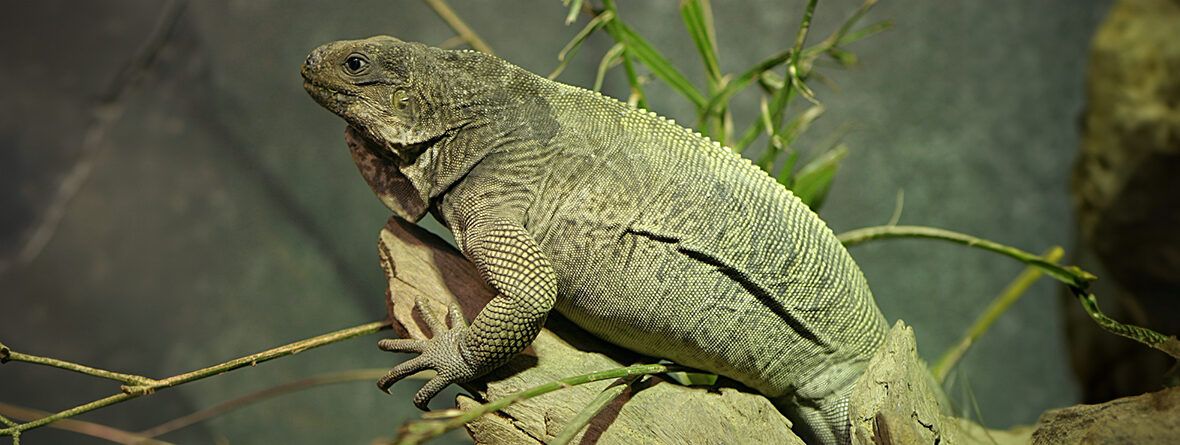
The Anegada rock iguana, aka Anegada ground iguana or stout iguana, hails only from the islands of Anegada and Guana. They previously inhabited Puerto Rico and Saint Thomas, but have been extirpated from these islands over time. Sadly, these iguanids face many threats such as habitat loss and destruction at the hands of residential and commercial developments, farming, ranching, logging, mining, and quarrying; habitat division at the hands of roads and railroads, that also can result in vehicle strike (being hit by vehicles); invasive species, and with them disease; and climate change which can cause severe flooding and habitat degradation. The IUCN lists these lizards are Critically Endangered. Their populations are also decreasing.
First the Stats…
Scientific name: Cyclura pinguis
Weight: Up to 9 lbs.
Length: Up to 22 inches, plus up to a 24 inch tail
Lifespan: Up to 80 years
Now on to the Facts!
1.) Their estimated wild populations are presumed to be only up to 440 individuals.
2.) The Anegada ground iguana is touted as being the oldest known species of Cyclura and the likely most genetically divergent of the West Indies’ rock iguanas.
3.) They were first described in 1917 by American Herpetologist Thomas Barbour.
4.) Their specific name pinguis means “fat” and is in reference to their plump body and the common name of “Stout iguana”.
5.) Juveniles are patterned with wide gray to moss green bands mixed with wide gray to black anteriorly directed chevron patterns. These bands fade and are typically lost as they get older.
But wait, there’s more on the Anegada rock iguana!
6.) These lizards are sexually dimorphic in that males are larger than females, and have more prominent dorsal crests, aka horns, and femoral pores on their thighs, that are used to release pheromones to attract a mate.
7.) Various leaves, flowers, and fruits are their primary diet. However, in regions with large amounts of introduced grazing animals, these critters have adapted to also preying on centipedes, millipedes, roaches & other insects, as well as other invertebrates.
Did you know…?
This forced diet has affected the iguanas’ capability to reproduce. Females are not being provided with enough nutrition to produce eggs and support their own metabolism as well; most die after laying eggs. This results in the present altered sex ratio of 2 males to every 1 female.
8.) Anegada Island, being formed from coral rather than volcanically, provides many places for these lizards to hide.
9.) The Anegada rock iguana is presumed to be monogamous (mates for life).
10.) Females lay up to 20 eggs per year that hatch in up to 40 days.
But wait, there’s still more on the Anegada rock iguana!
11.) Their primary predators are feral dogs and cats.
12.) These iguanas are diurnal (active during the day).
13.) The British Caribbean islands are extraordinarily diverse in biodiversity, sadly with many Critically Endangered species that are unique to these islands. However, there is basically no enforcement or implementation of CITES whatsoever.
14.) In circa 1980s, 8 of these iguanas were moved from Anegada to Guana Island, British Virgin Islands, to begin a second population in addition to the species’ former range.
Now a Short Anegada Rock Iguana Video!
Be sure to share & comment below! Also, check out the Critter Science YouTube channel. Videos added regularly!
Want to suggest a critter for me to write about? Let me know here.
Some source material acquired from: Wikipedia & IUCN
Photo credit: Colin Burnett



